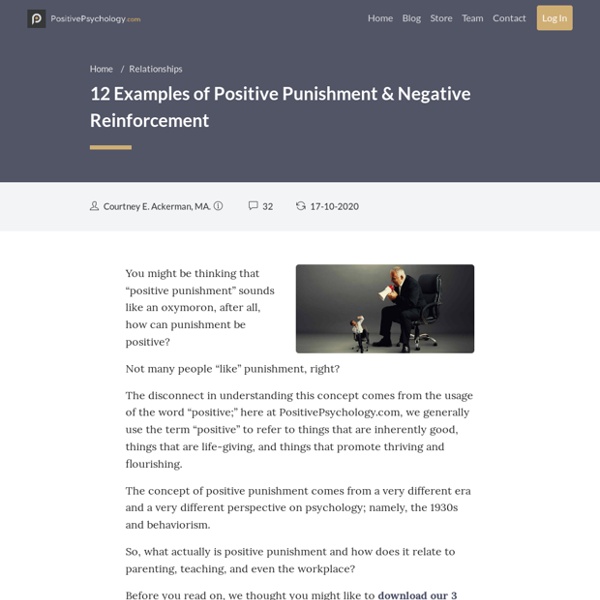Physical punishment and why few parents openly admit they cane, smack or spank
SINGAPORE: Everyone has an opinion on everything parenting related: From co-sleeping choices to the intensity of enrichment lessons. But there are fewer things more divisive – and morbidly fascinating – as the discussion of parenting and discipline, specifically, the relevance and role of physical punishment in disciplining a child. To cane or not to cane, that is the question. Let me draw the battle lines for you.
Why Negative Reinforcement Works Better as Your Child Grows into A Teen
If you are someone who has always loved the freedom of “no strings attached”, the idea of marrying and having kids could be quite underwhelming. The idea of having a family always used to bug me, until I finally found the love of my life. It's when I categorically made up my mind about what I wanted from our marriage. I wanted kids, I was clear about that, but I wasn’t certain how I would be taking care of them.
Negative Reinforcement: What Is It and How Does It Work?
What is negative reinforcement? Negative reinforcement is a method that can be used to help teach specific behaviors. With negative reinforcement, something uncomfortable or otherwise unpleasant is taken away in response to a stimulus. Over time, the target behavior should increase with the expectation that the unpleasant thing will be taken away. Read on to learn more about this type of learning.
Suspension and Revoke of the Drivers’ Licence – Drink Driving in Singapore
( Singapore Context)Under the road traffic act Section 48: Driving Licence WILL NOT BE GRANTED to any applicant if there is another licence held by the applicant which is suspended or revoked. The applicant is also not allowed to go on the roads during the period of suspension or revoke ( meaning not allowed to drive or ride a car or motorbike). Under this section( Road Traffic Act Part II Licencing of Drivers), as long as the person is under suspension or revoke, he will not be allowed to hold another drivers’ licence, be it any class.
Negative Punishment Drawbacks – Tired Mom Supermom
Negative Punishment Drawbacks Inside this post: The drawbacks of using negative punishment when disciplining children. It’s shocking how many adults still use negative punishment with their kids today.
The value of reinforcing positive behaviour for our teens
As children approach adolescence, they sometimes begin testing limits, bending the rules and otherwise going against the grain. While this is normal behaviour for teens, it can be incredibly trying for you, as a parent. Teenagers may also be dealing with the stresses that come with trying to fit in with their peers and assert their growing independence. However, at the same time, they are looking for validation from the adults around them. It's crucial, therefore, for parents and teachers to provide as much guidance and positive reinforcement as possible, rather than simply tightening the rules.
Discipline for Teens: Strategies and Challenges
When your child becomes a teenager, your parenting role is likely to shift. You may find yourself becoming more of a guide, rather than an enforcer. That’s not to say your child won’t need you to intervene when there are safety issues or that your teen won’t need consequences. But, by now, it’s OK to let your child make some choices on their own, even when you think it’s a bad choice. Typical Teen Behavior Teens like to test the limits of their independence.1 So don’t be surprised when your teen argues with you when you say no, or when they go behind your back to do as they please.
7 Examples of Positive Reinforcement in Everyday Situations
Positive reinforcement is a highly recommended concept that is grounded in behavioral psychology and is used regularly within applied behavior analysis services. Positive reinforcement refers to the addition of a stimulus [a reinforcer] after a particular behavior with an increase in the frequency of that behavior occurring in the future. Sometimes the concept of positive reinforcement can be misunderstood. Sometimes the use of positive reinforcement is seen as something that is only used in a structured or contrived manner. It is important to remember that positive reinforcement occurs often in everyday situations for all people. Let’s go over examples of how positive reinforcement is present within common situations (with the assumption that the behavior that was the focus of the example occurs more often in the future).
Average Speed Cameras To Be Used For Enforcement Action Along Tanah Merah Coast Road From 17 December 2018
From 17 December 2018, the Traffic Police (TP) will commence the use of the average speed camera (ASC) system for enforcement action, along a 4km stretch of Tanah Merah Coast Road (speed limit of 70 km/h). This is the first ASC system to be deployed on Singapore roads. The ASC system was installed along Tanah Merah Coast Road in the first quarter of 2018 and has been subjected to rigorous testing, to ensure accuracy and robustness.
The value of reinforcing positive behaviour for our teens
As children approach adolescence, they sometimes begin testing limits, bending the rules and otherwise going against the grain. While this is normal behaviour for teens, it can be incredibly trying for you, as a parent. Teenagers may also be dealing with the stresses that come with trying to fit in with their peers and assert their growing independence. However, at the same time, they are looking for validation from the adults around them. It's crucial, therefore, for parents and teachers to provide as much guidance and positive reinforcement as possible, rather than simply tightening the rules.




This article states that by removing the curfew when a teenager has proven she is responsible and practices common sense is negative reinforcement. by dioriviemae Mar 27